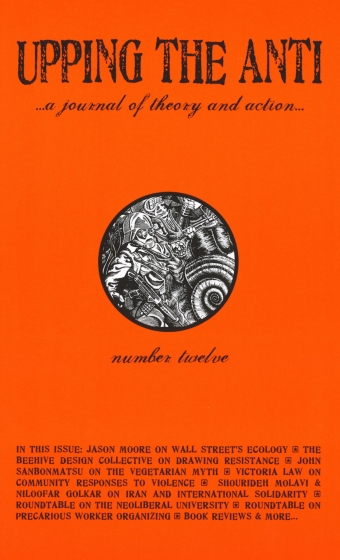The Civil Rights Movement and the Black Bloc
Dear UTA,
I’d like to offer an historical corrective to one part of your editorial on the G20 protests. My hope is that a better analysis will lead to a more clear-eyed evaluation of the effectiveness of property destruction and summit activism than yours was able to support.
The editorial claims that during the civil rights movement in the 1960s, while some groups “conveyed a message of confrontation and implacable resistance to white supremacy,” others like the Southern Christian Leadership Conference (SCLC) and the Student Non-violent Coordinating Committee (SNCC) worked “fully within the bounds of bourgeois politics.”
This categorization is completely misleading, despite its wide currency on the left. SCLC and SNCC were very different organizations. SCLC was Martin Luther King’s group, essentially an alliance of ministers who travelled around making speeches and leading marches. It operated entirely on the basis of charismatic leadership, whether by King, Ralph Abernathy, or, later, Jesse Jackson.
SNCC, on the other hand, moved on from sitting in at lunch counters shortly after its founding, and began organizing people. SNCC activists would live with poor and brutalized people for long periods, and support them in organizing their communities by calling meetings, going door-to-door, and taking simple but brave political actions.
These actions – any actions – were enough to get people beaten, threatened with death, or killed. In white supremacist society, there is no “bourgeois politics” for black people to work within. In fact, the reason SNCC began organizing people to vote was that the Kennedy administration (foolishly misunderstanding the situation of SNCC organizers) promised to use federal force to protect activists who switched from “direct action” to voter registration. SNCC took the bait because it believed its organizers would be better able to get people to meetings if their lives weren’t in danger.
As Wesley Hogan says, “no action by blacks was considered ‘moderate;’ only total passivity and total acquiescence to all the customs and expectations of a white supremacist society were considered acceptable conduct” (Many Hearts, One Mind: SNCC’s Dream for a New America, University of North Carolina Press, 2007, p. 59). The point of SNCC was not to confront or not confront; it was to transform people politically, and in the process undo the deeper existential or spiritual problem of brutal disenfranchisement and alienation.
It’s completely meaningless to lump SNCC and SCLC together. One operated entirely on charisma and was a top-down organization with very little down, while the other organized people at the very bottom of a ruthlessly hierarchical society to exercise some political agency.
Actions like the anti-G20 demonstrations are essentially charismatic displays, in which activists and police perform a theatrical confrontation whose outcome is by now – a decade after Seattle – a foregone conclusion. Mass arrests, indignation, and draconian bail conditions follow. Nothing in the lives of a single oppressed person anywhere in the world changes as a result and the humdrum nightmare of global capitalism goes on unaltered. No amount of situationist verbiage can alter that fact.
The argument that this kind of action is more radical than organizing people (to do pretty much anything) is just plain silly. It’s not so much an argument, in fact, as a macho assertion, a badge, a status symbol. Certainly confronting police is sometimes necessary, but for the activists who fetishize it, it’s a surrender of politics to prediliction. Some people just like to smash windows and fight with cops, just as others like to write long letters to the editor.
But writing letters to the editor, in most cases, doesn’t get you arrested. And many of the people who can’t seem to resist tussling with police do really important political work when there’s no summit in town. They organize meetings; they write and speak about important issues; they assist people in finding their way through dehumanizing bureaucratic mazes; they improve the lives of ordinary people around them slowly and all but invisibly.
To have these activists scooped up by the police and face punishing limitations on their freedom to organize all for wearing a black bandana is an injustice, but more importantly (given their agency in the matter) it’s a tragic waste. We all decry the stupid wastefulness of the summits themselves, but we get all meek when it comes to the utter pointlessness of flinging hundreds of effective activists into the gears of the criminal justice system for no apparent purpose.
Displays of charisma – a great speech, say, or an important election, or a physical confrontation between the forces of good and evil – are exciting when they happen, and inspiring to watch and take part in. But they get us exactly nowhere without dedicated, difficult organizing. More importantly, they should never be allowed to prevent dedicated, difficult organizing.
When charismatic actions turn Custeristic, they become liabilities to organizing work, to multiplying the ways in which people can express their humanity and agency in creating a less brutalizing world. Last June’s anti-G20 protests in Toronto are an excellent case in point.
In solidarity,
David Tough
Ottawa

